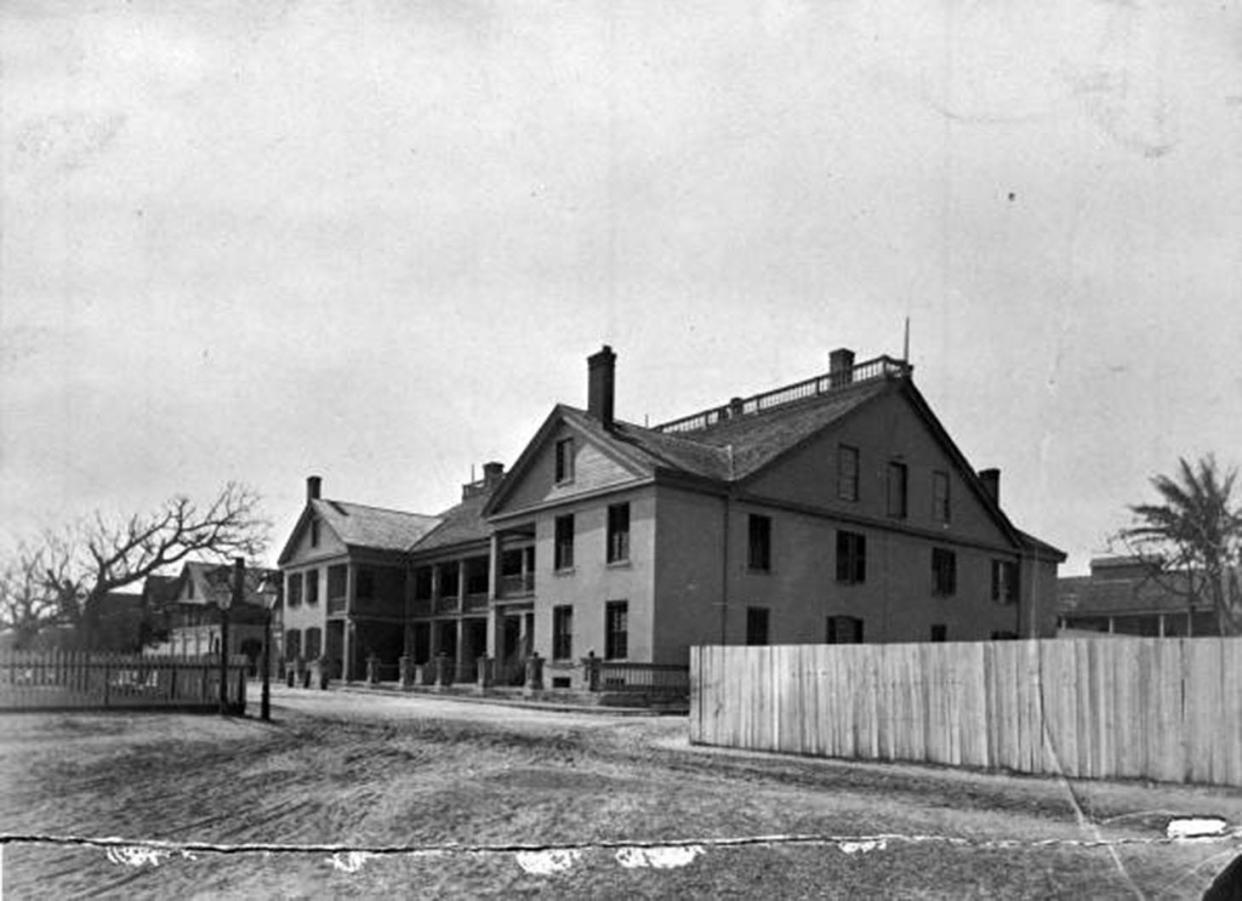Death of former first lady brought tension to St. Augustine in 1689 | Susan Parker

- Oops!Something went wrong.Please try again later.
Juana waited. She had once been the "first lady" of Spanish Florida as the wife of Gov. Pablo Hita Salazar. Now, in 1689, she was deceased and power struggles swirled around her burial.
Funerals often bring about arguments over status and authority — who is permitted to attend, who sits where, who speaks. Funerals do so today as they did in the 17th century and for so many years before then.
Juana was a pawn in the ongoing contentions between the priest of St. Augustine's parish church and the Franciscans missionaries.
Susan Parker: Parish priests kept their eyes on Florida's governors
Susan Parker: Rest in peace - or maybe not - for Francis Fatio
The Franciscan monastery was at today's Florida National Guard Headquarters at the corner of Marine and St. Francis streets.
As with so many high-status persons in Spanish St. Augustine, Juana had instructed that she wished to be buried at the Franciscan monastery. No problem. The issue was that the Franciscan friars did not want the parish priest, Father Alonso Leturiondo, to conduct any services in "their space."
Father Leturiondo was the parish priest of St. Augustine's Catholic church, which was, of course, Juana's church. Reacting to the friars' denial, Leturiondo upped the stakes and locked Juana's body in the parish church. The funeral and burial were on hold.
Even Governor Diego de Quiroga got into the fray.
Juana finally broke the deadlock
It was Juana, who in a sense broke the stalemate. While the priests and friars argued, Juana's body decomposed. Finally all were forced to agree that there could be no more delay. The friars relented, saying they would permit parish priest Leturiondo to accompany Juana's body into the monastery space for burial.
At last, Juana's funeral procession wound its way southward along Aviles Street from the parish church, then located on the Plaza. But spectators would witness that when the mourners arrived at the monastery for the burial, the friars did "a 180" and blocked the entry of priest Leturiondo.
Susan Parker: County Road 210 follows route used in 1700s
Susan Parker: Not all roads lead to Tolomato Cemetery
This sort of power struggle must have played out many times over many years. Most of them did not, however, appear in the old documents.
One hundred twenty years after Juana's matter, a similar wrangle was recorded. Again it involved an influential and high-status individual.
In 1811 Francis Philip Fatio, a wealthy planter and large landholder in Spanish East Florida, died at 86. Fatio had acquired a great deal of influence because he often provided emergency food and building materials to the Spanish government on credit. He provided docking space on his New Switzerland plantation for Spanish soldiers on duty on the St. Johns River. The Spanish government was often in his debt.
Fatio's wife had passed away the year before and was buried in Tolomato Cemetery on today's Cordova Street. Francis Fatio wished to be buried next to his wife.
Parish priest Father Miguel O' Reilly said "no." O'Reilly justified the decision saying that the old man had never converted to Catholicism although all his children were baptized and married in Catholic rites.
A family friend tried to help with the unpleasantness. The friend asked the governor to intervene. O'Reilly retorted that the burial was a matter for God (represented by O'Reilly), not for the governor.
As with Juana, Nature forced a decision. The August heat hurried the issue of burial. Interment could no longer wait. Francis Fatio was buried at his (Switzerland) plantation on the St. Johns River.

Fatio's story continues. Just a year after his burial, invading troops from the United States occupied Fatio's New Switzerland in 1812. In the main house they found evidence that Fatio had once served in the British Army. This angered the American forces. James Cusick in his book "The Other War of 1812" includes one soldier's remarks that the invaders who occupied the plantation "broke open the family vault, and took out the body of Francis P. Fatio Sr., and left his bones scattered about, which were afterward gathered together by his friend and again interred."
The United States was at war with Great Britain (War of 1812) and the American invaders decided that desecration of Fatio's grave was appropriate for a once-British soldier.
Susan R. Parker holds a doctorate in colonial history.
This article originally appeared on St. Augustine Record: Arguments surrounded funeral of former first lady Juana

